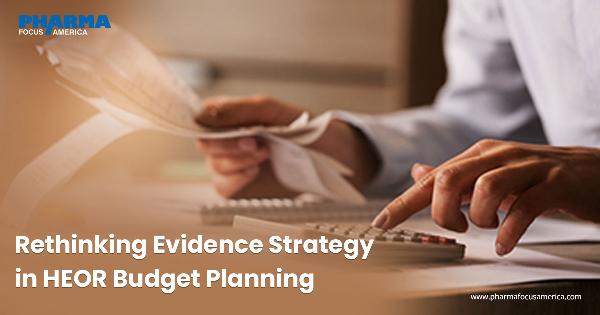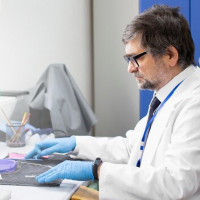Rethinking Evidence Strategy in HEOR Budget Planning

Strong 8k brings an ultra-HD IPTV experience to your living room and your pocket.
For those who focus on generating value propositions through health economics and outcomes research (HEOR), the fall season is a key time period for budget planning for the upcoming fiscal year. With so many changes influencing the healthcare landscape, revisiting and advancing an organization’s evidence needs is necessary to more accurately build an effective value-based commercialization strategy.
Health economics and outcomes research (HEOR) can no longer be approached as a “one-and-done,” cookie-cutter process. The dynamic policy environment in the U.S., the evolving value assessment landscape, and the continued shift toward patient-centered care are impacting the evidence-generation needs of healthcare decision makers in a new and advanced way.
In response to the changing marketplace, life sciences companies are proactively utilizing HEOR to drive broader business decisions such as market access strategy, field and marketing strategy, clinical development and patient-level interventions, and to support program development. Now, more than ever, manufacturers must demonstrate both the traditionally expected and novel value of their products to a variety of stakeholders — such as commercial payers, providers, patients, and the Centers for Medicare & Medicaid Services (CMS).
In January of this year, the International Society for Pharmacoeconomics Outcomes Research (ISPOR) released the publication of its 2024-2025 Top 10 HEOR Trends Report. The report, which is based on input from ISPOR members and its Health Science Policy Council, provides insights into topics that are re-shaping how companies approach HEOR, such as real-world evidence, value assessment, artificial intelligence, health equity, and drug pricing.
One of the biggest trends discussed in the report is how the Inflation Reduction Act (IRA) is influencing HEOR. The IRA’s introduction of Medicare price negotiation will formalize value assessment during later stages of the product life cycle and require manufacturers to develop an evidence-generation program to support the shifting value requirements. Value assessment informs coverage, reimbursement, utilization management decisions, and the continued shift toward patient-centered care.
The evidentiary needs of specific assets at different points in the product life cycle can vary significantly based on a variety of factors, including market dynamics, the policy environment, the targeted disease itself, and its impact on patients.
The four elements of strategy development
As life sciences companies develop their HEOR budgets, leaders can opportunistically revisit their portfolio’s research and evidence needed to support their company’s commercialization strategy. To ensure a robust HEOR strategy that prepares a manufacturer for the coming year, there are four specific elements that should be considered. Incorporating these elements offer a “PEEC” into ways to position the company for success in the current and future years to come.
1. Perspective. Examine plans for evidence generation from a stakeholder’s point of view.
Evaluating and updating evidence generation plans to reflect the latest dynamics and stakeholder priorities is a strategic imperative. Consider the important stakeholders (e.g., payers, providers, and patients), understand what each stakeholder expects and needs from the evidence, and incorporate those evidence needs into the research plans. Stakeholders increasingly expect manufacturers to infuse the patient perspective into evidence-generation strategies. Evidence can be used to better understand the experiences of patients with a particular condition, for example, or to describe how innovative treatments can directly and indirectly impact that experience. Conducting patient preference studies and exploring health disparities research can highlight existing barriers to care or provide insights to determine what patients need for successful care. Ensuring evidence generation plans incorporate the patient perspective will ensure their needs can be communicated to healthcare decisionmakers.
2. Evaluation. Assess the value assessment needs based on each product’s stage in the life cycle.
Value assessment in the U.S., such as Institute for Clinical and Economic Review (ICER), the IRA, and other policy changes are shifting evidence needs across the product life cycle. Pre-launch assets may require economic modeling and value assessment planning to prepare for a potential review by ICER and other health technology assessment bodies. In-line products, meanwhile, will need to generate evidence to prepare for potential Medicare price negotiation late in a product’s life cycle, or the negotiation of competitor products in the same therapeutic area(s).
3. Expansion. Extend capabilities with innovative data partnerships and data sources.
Consider how evidence generation capabilities can be improved through partnerships and new data sources. Data on social determinants of health, for example, may uncover details of patient access challenges, or biomarker lab data can be used to identify and target specific patient sub-populations.
4. Connection. Consider HEOR’s integral relationship to other aspects of the business.
Research agendas are traditionally intended to support market access, but a well-planned strategy considers the potential uses by other aspects of the business. With forethought, research can have greater impact and produce a higher return on investment if used to support field teams speaking to providers about improving treatment protocols, marketing teams seeking to reach a target patient population, or patient support programs that need to understand patient needs and barriers to access. Incorporating a broader set of business needs in the research agenda can improve business efficiency and provide additional value across the organization.
Read more: https://www.pharmafocusamerica.com/strategy/rethinking-evidence-strategy
Note: IndiBlogHub features both user-submitted and editorial content. We do not verify third-party contributions. Read our Disclaimer and Privacy Policyfor details.







